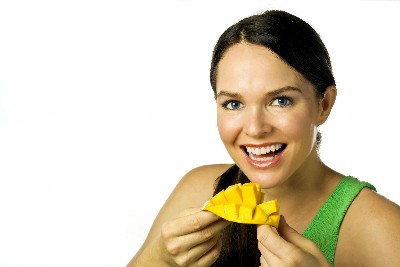Río Hato Mango Festival 2016

One of the best ways to celebrate the season, brush up on you mango knowledge and taste a wide variety of mangos the country serves up is to visit the Río Hato Mango Festival! This year the festivities begin on May 19th continuing until May 22nd, events are held at Casa de la Cultura Río Hato.
Mango season in Panama kicks off in May continuing into June and early July and throughout the season mangoes are eaten as frequently as apples are in other parts of the world.
Panama is home to a variety of mangos types, coming in a range of shapes, sizes and colors. This variety is a result of the mango’s many years of cultivation. Today each species of mango has a unique taste, some are more fibrous and tart, while others are smooth and sweet. Because of the plant’s prevalence, it might come as a surprise that the mango tree is not actually native to Panama. It was in the early 18th century when Spaniards introduced species of the plant from the Philippines to Central America. The plants were introduced through the trading ports of Mexico and Panama.
The common mango Mangifera indica, is the type of mango normally grown in subtropical regions like Panama. It originated in Myanmar (Burma) and the Andaman Islands in Eastern India. The common mango is resilient and easy to grow in a range of soils, from light sandy soil to thick red clay. Their versatility allows them to grow anywhere from mountain ranges to sandy beaches.
This is perhaps why by the end of the 19th century mango trees could be found in almost every place in the world suitable for their cultivation. Other strands of mangos are more difficult to grow. Locally known as the ‘carate’ or ‘hilacha’ for example has ability to grow practically anywhere, whereas the local mango ‘torcazo’ with purple hued skin, is high in quality but difficult to grow.
It is hard to say how many species of mangos actually exist in Panama for a couple of reasons. First of all, because there are so many nicknames for the various species, and as horticulturalist continue to crossbreed mangos new and improved species emerge.
At last year’s mango festival 15 known varieties and five types that could not be identified were in attendance, there common names are: papayo, papayita, cascarita, calidad, mantequilla, huevo de burro, chancleta/guineo, cachete de gringa/colorado, piña, morado, papayon de Chitré, súper haden, blanco, kent, julie, irwin, smith, and tommy atkins. The type of mango commonly sold by street vendors in Panama City is called ‘papayo.’ This mango can be eaten ripe or green (not ripe). It has little fiber, a sweet taste, and is commonly used in mango salads.
Mangos strains can be manipulated for many reasons, to create a thicker skin, to protect against insects or to create a smaller seed, increasing the flesh to seed ratio. With these improves new species continue to be produced.
Here are a few of the local favorites:
Cachete de Gringa (foreign girl’s cheek)
This is a round mango may have gotten its name from its pinkish hue when ripe. The cachete de gringa mango has medium seed surrounded by a good amount of juicy flesh. While it is a little fibrous, the cachete de ginga mango is great for smoothies and blended sauces.
Mango Chancleta (Slipper Mango)
The Chancleta mango commonly called the mango of the tropics is a long thin mango slightly fibrous, with bright yellow color. This tasty fruit has a long thin seed, and many nicknames among Panamanians. Its monikers include mothers tongue, banana and old tit.
Mango Huevo de Burro (Egg of the Donkey)
The Mango Huevo de Burro is a smaller mango that turns bright red when ripe. The seed is slightly bigger than most with less flesh and some fibers.
Selection & Storage
Covered in an inedible skin, mangoes should be well washed. The last two inches of a mango stem contains sap that can burn the skin and cause a painful rash. When selecting a mango, pick up each fruit. Feel for a heavy weight for its size to indicate juiciness, and press your finger into the flesh to test for a slight yield, which indicates ripeness. A strong floral aroma should be your pick, but watch out for any odors indicating that the fruit has fermented. If you are taking more mangoes home than you can eat, choose under-ripe fruits that you can leave in a cool room for a couple days to ripen.
How to Peel a Ripe Mango in Under 10 Seconds
Mangoes can be notoriously difficult to peel, due to how slippery they are inside. Here's how to skip the mess and get rid of those pesky skins in seconds. Using the tip of the mango as a guide, slice the two cheeks of the mango off, taking care to avoid the stone in the center. Place the edge of the mango sliced pieces against the lip of a glass and slide it down. Because mangoes are a soft fruit, the glass can slide through it and separate the skin relatively pain free. Then, it is super simple to slice it up and place it into a bowl. Your mango is ready to serve!
Trending Tags


